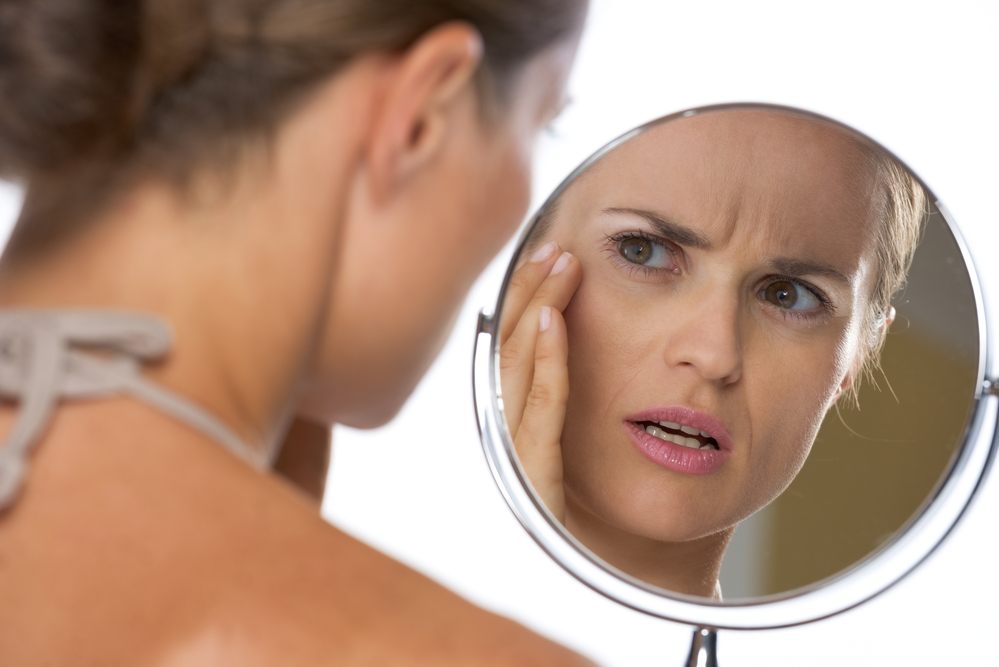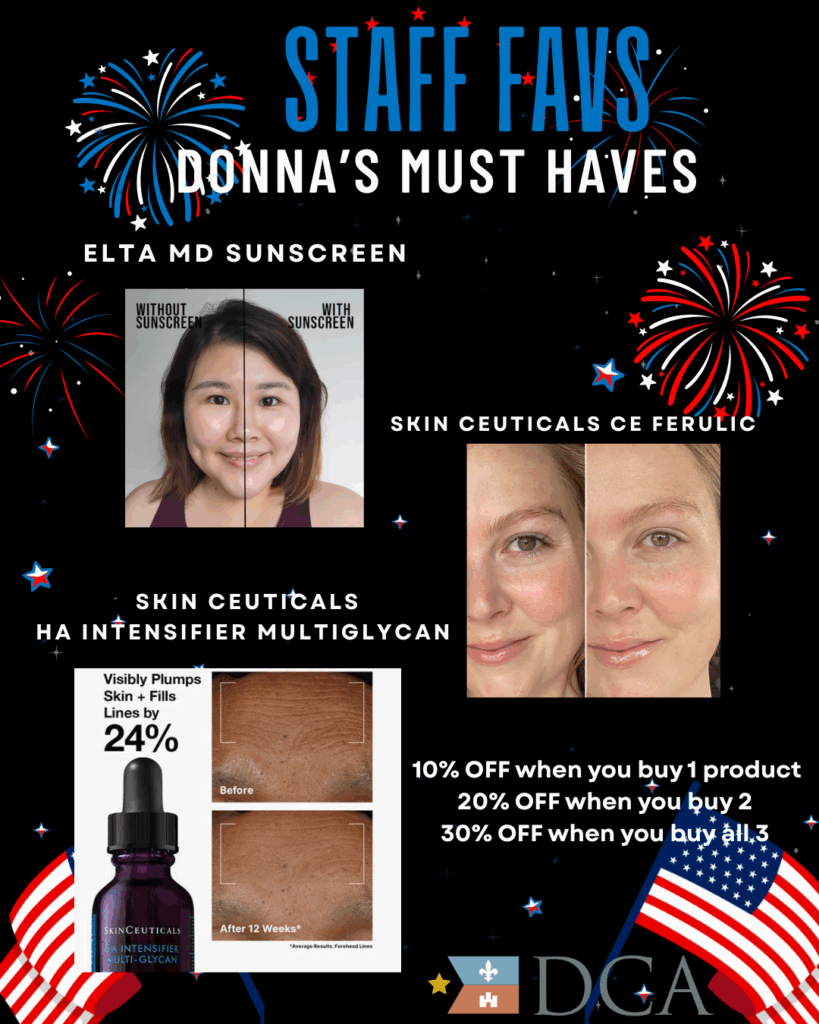Being diagnosed with skin cancer is a frightening experience, but detecting cancer on your skin early almost always means getting rid of it completely. When you discover a cancerous growth on the top layer of your skin, it can nearly always be removed quickly and easily. This is why it is important to know the early signs of cancerous growths on the skin and to see your dermatologist on a consistent basis. Visit us at the Dermatology Center of Acadiana in Lafayette, LA for a consultation.
Early Stages of Skin Cancer
Basal Cell Carcinoma
Pearl-Like Bump
Basal Cell Carcinoma will often present as a bump on the skin that resembles a mole. Its color can be similar to the natural color of the skin, or it can be off-white, pink, or red.
Pink Area of Skin
Sometimes BCC is first seen as a pink patch on the skin that resembles a small rash. It may feel irritated or itchy.
Sore That Will Not Heal
A sore that doesn’t heal is another sign of BCC. The sore may bleed or crust over. Sometimes it may disappear and then return suddenly.
Unexplained Scar
Another sign of early BCC is a shiny, flat area on the skin that looks like a scar. It can be white, yellow, or the same color as the skin.
Location
BCC can be found on any part of the body that has been exposed to the sun. This may be the face, neck, head, chest, arms, back, or legs.
Squamous Cell Carcinoma
Red Bump
Squamous Cell Carcinoma is sometimes seen as a red bump on the skin. It will be hard and not move.
Flat Sore
SCC can also present as a flat sore on the surface of the skin. It may break into an open sore and get bloody or crusty. These sores often do not heal properly or heal only to return.
New Sore On an Old Scar
SCC may show up as a new sore or bump that occurs on top of a previous scar. or healed sore.
Scaly Area
Another early sign of SCC is a scaly area that may look like a rash and can develop into an open sore. It is often seen around the mouth, especially the lips.
Location
This type of skin cancer is also usually seen in areas of the body that get a lot of sun, although it can be found in other areas as well. It is often found on the nose, mouth, ear, arms, and hands.
Melanoma
Asymmetry
Regular moles are usually symmetrical and are round or have an oval shape. Moles that signify melanoma will usually be asymmetrical in appearance.
Border
Moles that have no clearly defined border are a possible sign of melanoma. The edges may have a scalloped quality or have a border that juts in and out.
Color
Regular moles are usually just one color while moles that are various colors could be melanoma. These moles may have several shades of brown and tan or even black. Over time, the colors can also change to red or white.
Diameter and Dark
Melanoma moles are typically the diameter of a pencil eraser or about .25 inches, although they may grow and change quickly. Moles that are unusually dark as also suspicious.
Evolving
Melanoma does not tend to stay the same. One indicator of melanoma is a spot that rapidly grows, becomes more pronounced, or changes color. It may also suddenly begin to itch, bleed, or ooze.
Causes and Contributing Factors
Sunlight
Excessive exposure to the UV light of the sun is the most common reason for developing skin cancer. It is important to avoid direct sun exposure, especially during the middle of the day when the sun is at its strongest. Be sure to protect your skin any time you are out in the sun. Wear sunscreen on any exposed skin, and reapply it regularly. Also, consider wearing a hat and sunglasses.
Do not purposely spend time in the sun for the purpose of getting a tan. People who have had severe sunburns are more at risk for cancer than people who have not, so be sure to seek shelter before that can happen
Tanning Beds
Tanning beds also produce dangerous UV light that can cause cancer on your skin. If you must tan your skin, consider a spray tan or a tanning lotion.
Radiation
If you have been exposed to radiation, you are more likely to develop cancer on your skin. This could be radiation due to treatments for conditions like acne or eczema. If you have had radiation treatment for any reason, you should be especially careful to protect your skin when you are outside.
Genetics
Genetics can play a large role in being at risk for cancer of the skin. If your parents, grandparents, or siblings have had cancerous growths removed from their skin, you are at a higher risk of developing the disease yourself. This is especially true if you and your relatives share the same type of skin or have certain properties in common like coloring.
Fair Skin
People who have fair skin are more likely than people with darker skin to develop skin cancer. This is mainly due to the ability of darker skin to protect the body from UV rays. You are also at greater risk if you have light hair and eyes.
However, it is a myth that people with dark skin cannot develop cancer. Even people who have dark skin should wear sunscreen and protect themselves.
High Elevation
If you live at a higher elevation, you are at a greater risk for cancer of the skin. This is because you are consistently closer to the sun’s rays. People who live in warm, sunny areas are at a higher risk as well.
Moles
If your skin naturally has moles, you are more likely to develop cancer than someone who does not have moles. You should carefully check your moles on a regular basis and well as have them seen by a dermatologist on a regular schedule. If you see any changes in your moles, contact a doctor right away.
Previous Skin Cancer
Each time you are diagnosed with cancer of the skin, you are more likely to have it again. People who have had a cancerous growth removed should be especially careful to check for signs of new cancer.
Weak Immune System
A weakened immune system can be caused by certain conditions or illnesses and can make you more susceptible to cancer. This includes diseases like HIV/AIDS, hepatitis, and certain other cancers. Keep your immune system healthy by eating a variety of nutritious foods.
Toxic Substances
Exposure to toxins can increase your chances of developing cancer of the skin. Arsenic and mercury exposure are two examples. Be sure you protect your skin from toxins by wearing proper protective coverings any time you know you are going to be near them. People who work with toxic substances should take extra precautions.
Certain Medications
There are certain medications that cause your skin to be more vulnerable to damage from the sun. These include antibiotics and some antifungals. If you have been prescribed a new medication, be sure to ask your doctor how it will affect your body’s sensitivity to sunlight.
Treatments
Excision
Excision is used for all three common types of skin cancer and is almost always used in the case of melanoma. To perform an excision, we will numb the area around the growth. Then we will carefully cut out the skin that is affected as well as some of the healthy skin around the area. We will send these samples to the lab to determine if there is more cancer in the part of the skin that looks healthy.
If there is more cancer present than we realized, we will repeat the excision until all of the affected skin is gone.
Mohs Surgery
This is a surgical procedure that may be performed in the case of Basal Cell Carcinoma or Squamous Cell Carcinoma. This procedure is the same as an excision except that less skin is taken. After we remove the skin, we will examine it in the office to make sure that all of the cancer is removed. Then we will go back and take more skin if necessary.
This procedure is a good alternative for areas where we prefer to take as little skin as possible. This includes certain areas of the face where removing skin can be dangerous or lead to a less attractive result.
Radiation
In the case of both BCC and SCC radiation may be used. This is considered a less than ideal alternative treatment and is typically only used when excision is not appropriate for some reason. This approach can take a long time and require several treatments.
Curettage and Electrodessication
This is another treatment for BCC and SCC, and it involves two steps. In the first step, the cancerous area is scraped off the body using special surgical tools. Once the top layer of skin has been removed, the area is treated with an electrical current.
The current will kill cancer cells that remain behind. Depending on the size of the affected area, this treatment may have to be repeated several times.
Chemotherapy Cream
Sometimes SCC or BCC that is caught in very early stages can be effectively treated with a topical cream. We will prescribe the cream and instruct you on its use. You will use it once a day or every other day until it begins to work. We will let you know when to stop using the cream. Once treatment is finished, it will take a week or two for the skin to heal.
Outcomes
BCC and SCC
The outcomes for BCC and SCC are usually very positive. Most patients are completely cured, especially if the cancer is caught early. The most important factor affecting the outcome of these types of cancer is treating the condition before it can spread to the lymph nodes or grow deeper into the skin.
Melanoma
Melanoma is a serious type of skin cancer, but it can almost always be cured as long as it is treated while it remains in the top layer of skin. If melanoma has spread, the outcome of treatment depends on the patient’s general health as well as the extent of the spreading.
Take Action
The most important thing you can do if you suspect you may have a cancerous area on your skin is to see a doctor immediately. The sooner you see a dermatologist, the more likely it is that the problem can be quickly and easily eliminated. If you see any signs of cancer development on your skin, contact the Dermatology Center of Acadiana in Lafayette, LA immediately for a consultation. We will assess your condition and get you the necessary treatment as soon as possible so you can go on enjoying your life.

